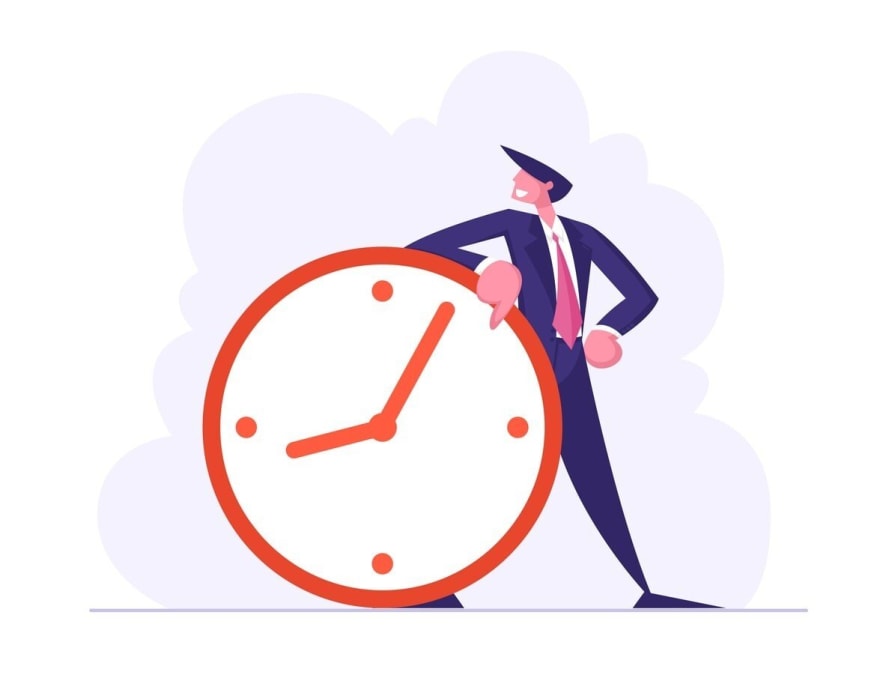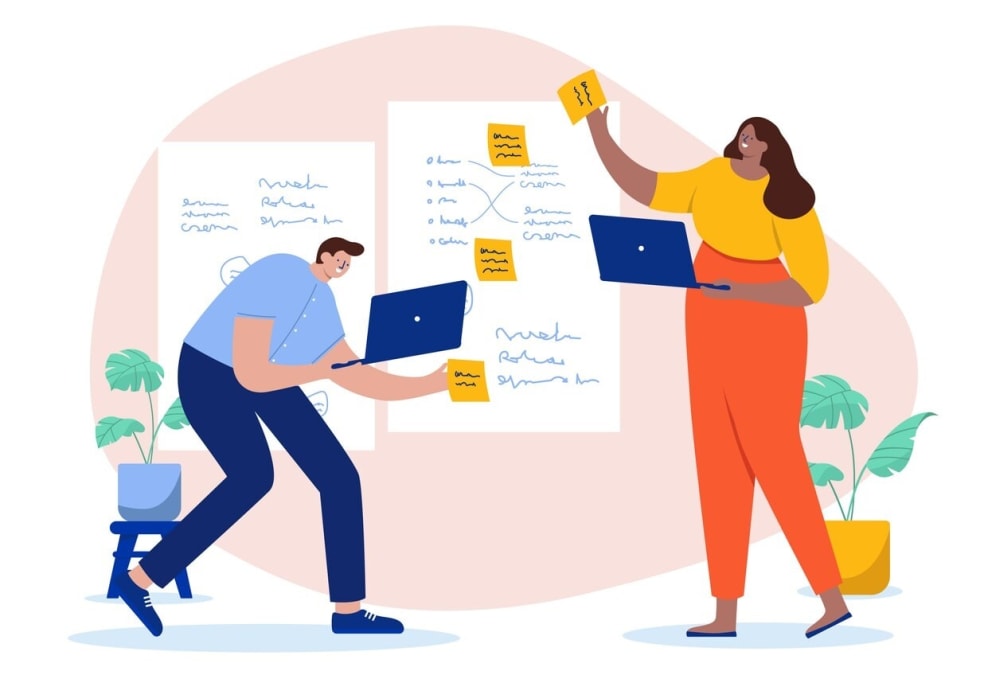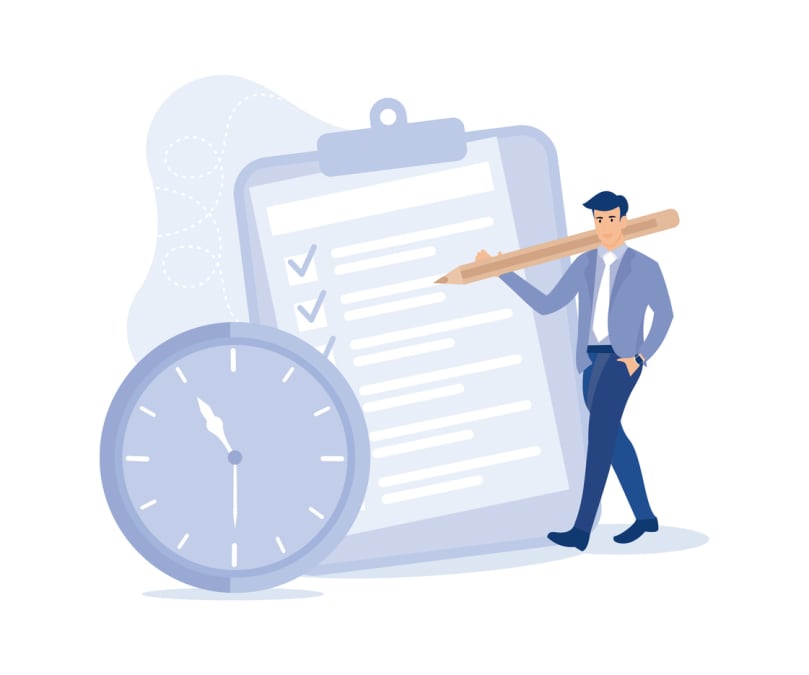Struggling to get everything done in a day? This guide reveals effective time management strategies to help you prioritize tasks, boost productivity, and get more done in less time. Whether you're a busy professional or just looking to sharpen your time management skills, these tips will help you take control of your schedule.
Key Takeaways
- Mastering time management enhances productivity, reduces stress, and allows for a balanced lifestyle.
- Utilizing techniques like the Pomodoro Technique and task prioritization can help streamline focus and improve efficiency.
- Combining various time management strategies, such as time blocking and effective delegation, leads to a customized approach that maximizes productivity and goal achievement.
Understanding Time Management

Time management involves organizing how to allocate time between activities to achieve optimal productivity and results. It is a skill that encompasses planning and prioritizing tasks to use time effectively. Effective time management strategies can make a significant difference in how we handle our daily responsibilities. Mastering time management skills enhances job performance, opens career advancement opportunities, and maintains a balanced lifestyle, accommodating both work and leisure.
Research has shown that employing various time management techniques can significantly reduce stress and anxiety. When we have a clear plan and prioritize our tasks, it becomes easier to make decisions, set achievable goals, and streamline our activities.
On the flip side, poor time management can lead to disorganization, missed deadlines, and increased stress levels. Therefore, it’s essential to evaluate and adapt our time management strategies to ensure a healthy balance between work and life.
Effective time management also involves:
- Self-analysis
- Planning
- Evaluation
- Self-control
Regularly assessing our time usage and making necessary adjustments can improve both productivity and overall well-being. It’s not just about getting more things done; it’s about getting the right things done in a way that aligns with our goals and values during our free time. This holistic approach to managing time can lead to a more fulfilling life when we have enough time and less stress.
Understanding the importance of time management is the first step towards improving it. Once we recognize its value, we can start implementing the strategies that will help us make the most of our time. In the following sections, we will delve into specific techniques and methods that can help you take control of your time and achieve your long-term goals.
Prioritizing Tasks

One of the most crucial aspects of effective time management is the ability to prioritize tasks. With countless responsibilities vying for our attention, it can be challenging to determine which tasks deserve our immediate focus. This is where prioritization techniques like the Eisenhower Matrix and the ABCDE method come into play. These methods help us categorize tasks based on their urgency and importance, ensuring that we focus on what truly matters.
The Eisenhower Matrix divides tasks into four quadrants: urgent and important, important but not urgent, urgent but not important, and neither urgent nor important. By placing urgent tasks into these categories, we can prioritize effectively and avoid spending time on activities that do not contribute to our overall goals. On the other hand, the ABCDE method categorizes tasks into five levels: A (most important) through E (least important), helping us enhance our focus on critical tasks. These techniques are essential for effective time management and help us stay focused on our most important tasks.
Visual aids like color-coding and prioritized to-do lists can also enhance the organization of tasks. Visual aids help quickly identify tasks requiring immediate attention, distinguishing between different priority levels. This not only helps in managing time more effectively but also reduces the likelihood of missed deadlines and enhances our ability to stay focused and avoid distractions.
Prioritizing tasks is not just about categorizing them; it’s about taking concrete steps to accomplish tasks. Set priorities with clear priorities allows efficient allocation of time and energy, ensuring the most important tasks are tackled first. This approach not only improves productivity but also provides a sense of accomplishment and reduces stress.
In the following sections, we will explore additional time management techniques that complement task prioritization, helping you create a well-rounded strategy for managing your time with some effective time management tips.
Using the Pomodoro Technique

The Pomodoro Technique is a time management method that has gained popularity for its simplicity and effectiveness. Developed by Francesco Cirillo in the late 1980s, this technique involves breaking work into intervals, typically 25 minutes long, called “Pomodoros,” followed by short breaks. This approach encourages focused, single-tasking and helps address common issues like multitasking, missed deadlines, and burnout.
Each Pomodoro is an interval of work that encourages focused, single-tasking. Concentrating on one task at a time improves productivity and reduces the cognitive load from task switching. After each 25-minute work session, a short break of 5 minutes allows us to rest and recharge, preventing mental fatigue and maintaining high energy levels throughout the day. This balance between focused work and regular breaks is key to sustaining productivity over long periods.
The Pomodoro Technique also helps in breaking tasks into smaller, more manageable parts, reducing feelings of overwhelm. For instance, a large project can be divided into multiple Pomodoros, making it easier to approach and complete. This method not only improves focus but also enhances our ability to estimate task durations more accurately over time. Moreover, the technique incorporates gamification, allowing users to track their progress and challenge themselves to complete more Pomodoros.
The flexibility of the Pomodoro Technique makes it adaptable to various work styles. While the standard interval is 25 minutes, it can be adjusted to suit individual preferences and the nature of the task at hand. Integrating this method into your daily schedule enhances time management, task efficiency, and overall productivity.
Implementing Time Blocking

Time blocking is a strategic approach to managing time that involves planning specific activities into designated time blocks. This method helps improve efficiency by providing clear focus periods for various tasks and minimizing distractions. Allocating specific time slots for activities creates a structured schedule, enhancing effective time management and allowing for a better time block experience.
Creating time blocks involves identifying high-priority tasks and scheduling them during peak focus times. For instance, if you are most productive in the morning, you might block out time for demanding tasks that require deep concentration during those hours. This approach not only improves the quality of work produced but also reduces anxiety associated with large tasks by providing a clear start and end time, even when facing time constraints.
Visualizing tasks in a calendar format can prevent overwhelming workloads and ensure that important activities are given the attention they deserve. Additionally, to enhance productivity, it’s essential to create blocks that align with your energy levels.
Time blocking also helps in reducing context switching, allowing for deeper focus on individual tasks. By dedicating uninterrupted time to specific activities, we can maintain a higher level of concentration and avoid the productivity losses associated with frequent task switching. Additionally, incorporating buffer time between blocks can help accommodate unexpected interruptions and provide flexibility in managing your schedule.
Regularly using time blocking can improve the accuracy of task duration estimations over time. As we become more familiar with our work patterns and the time required for different activities, we can refine our schedule to better align with our productivity goals. This method, combined with other time management techniques, can significantly enhance our ability to manage time effectively.
Applying the Rapid Planning Method (RPM)

The Rapid Planning Method (RPM), created by motivational speaker Tony Robbins, is designed to train your brain to envision goals and visualize success. This method focuses on three key components: result, purpose, and the massive action plan. By clearly defining the desired outcome (result), understanding the motivation behind it (purpose), and outlining specific steps to achieve it (massive action plan), we can create a structured approach to managing our time and achieving our goals.
Creating a Massive Action Plan involves grouping tasks into categories, making large goals more manageable. For instance, if your goal is to complete a major project, you can break it down into smaller tasks and organize them into categories based on their priority and sequence. This approach not only simplifies the process but also helps in maintaining focus and motivation by providing a clear roadmap to success.
The Rapid Planning Method encourages effective planning and time management by aligning our actions with our goals and values. Regularly reviewing and adjusting plans ensures we keep track of our progress to achieve desired outcomes.
This method, when combined with other time management techniques, can significantly enhance our productivity and help us manage time more effectively.
Leveraging the Pareto Principle

The Pareto Principle, also known as the 80/20 rule, is a powerful concept in time management that suggests that 20% of actions lead to 80% of outcomes. This principle emphasizes the importance of focusing on the most impactful tasks that yield the greatest results. Identifying and focusing on high-value activities significantly boosts productivity and efficiency.
Start your day with a refreshing routine. One important thing in the morning is to hydrate your body with a glass of water. This simple act can set a positive tone for the rest of your day.
Applying the 80/20 rule involves creating a list of tasks and determining which ones will deliver the greatest impact. For example, if you have a long to-do list, you might find that only a few of those tasks are responsible for the majority of your progress. By prioritizing these critical tasks, you can achieve more with less effort and time. This approach encourages regular reassessment of tasks to eliminate non-essential activities and focus on what truly matters.
The player achieved the highest score in the tournament, showcasing exceptional skill and determination.
Applying the 80/20 rule involves:
- Creating a list of tasks.
- Determining which tasks will deliver the greatest impact.
- Identifying that only a few tasks are responsible for the majority of your progress.
- Prioritizing these critical tasks to achieve more with less effort and time.
- Regularly reassessing tasks to eliminate non-essential activities and focus on what truly matters.
The Pareto Analysis highlights that a small percentage of tasks can yield the majority of results. This insight can be applied to various aspects of life, from work projects to personal goals. By concentrating on the most impactful 20% of tasks, individuals can enhance productivity significantly. This principle also aligns with the idea of effective planning, as it helps streamline decision-making and resource allocation.
Using the Pareto Principle can lead to increased efficiency by allowing us to focus on high-value tasks. Regularly evaluating and adjusting our activities ensures optimal investment of time and energy.
Minimizing Distractions and Managing Interruptions
Distractions and interruptions are common challenges that can derail our productivity and hinder effective time management. Creating a tidy workspace can enhance concentration and lessen mental clutter, allowing us to stay focused on our tasks. A clean and organized environment reduces the likelihood of distractions and helps maintain a clear mind.
Establishing ‘focus hours’ can help avoid non-urgent communications and maintain deep work periods. During these designated times, we can concentrate on important tasks without being interrupted by phone calls, emails, or other distractions. Implementing a ‘No Interruptions’ policy during certain hours can foster an environment conducive to deep focus and productivity.
Limiting multitasking is essential, as it often leads to scattered attention and decreased productivity. Instead of juggling multiple tasks simultaneously, we should focus on one task at a time, giving it our full attention. This approach not only improves the quality of work but also reduces the cognitive load associated with task switching.
Creating a supportive work culture can empower individuals to manage their distractions according to their individual needs. Encouraging regular breaks, such as those incorporated in the Pomodoro Technique, can help prevent burnout and sustain mental energy. Implementing these strategies fosters an environment conducive to focused work and enhanced productivity.
Delegating Routine Tasks
Delegating tasks involves assigning responsibilities to others, freeing up time for essential activities. Effective delegation is a crucial time management strategy that allows us to focus on high-value tasks and achieve more in less time. Proficient time management improves self-discipline and fosters a greater sense of accomplishment.
When deciding whether to delegate, consider if the task will recur and if the time invested in training someone is justified. Tasks that are routine or less critical can often be delegated to others, allowing us to concentrate on more important activities. The Pareto Principle can be applied here, helping us identify tasks that can be delegated to free up time for high-impact activities.
Clear communication is essential when delegating tasks to ensure expectations regarding outcomes and constraints are understood. Providing detailed instructions and setting clear deadlines can help the delegatee understand their responsibilities and perform the task effectively. Additionally, selecting the right person for the task based on their skills, experience, interest, and authority is crucial for successful delegation.
Effective delegation not only frees up our time but also provides opportunities for team members to enhance their skills and grow professionally. By empowering others and fostering a collaborative work environment, we can achieve greater productivity and create a more efficient workflow.
Utilizing the Pickle Jar Theory
The Pickle Jar Theory, introduced by Jeremy Wright in 2002, offers a visual person approach to time management that helps prioritize tasks effectively.
The technique categorizes tasks into four elements:
- Rocks, representing the most important tasks
- Pebbles, representing less critical tasks
- Sand, representing minor tasks
- Water, representing the least significant activities
This method encourages individuals to fill their schedule with important tasks first, preventing overwhelm from small tasks and less significant activities.
Rocks represent the most critical tasks that should be prioritized in your schedule. These are the tasks that have the highest impact on your goals and should be addressed first. Pebbles are less important tasks that can be managed once the critical tasks are taken care of. Sand symbolizes minor, non-essential tasks that can be postponed if time is limited. Water signifies personal life activities, which, while not work-related, are still important for overall balance.
Using the Pickle Jar Theory can enhance focus by clearly defining what tasks are most meaningful. Prioritizing the “rocks” first ensures completion of critical activities, reducing distractions and less important tasks. This approach not only improves productivity but also helps maintain a balanced life.
Combining Techniques for Maximum Efficiency
Combining different time management techniques can significantly enhance productivity and lead to better time management skills. Each method has its strengths, and by integrating them, we can create a comprehensive strategy tailored to our unique needs. For instance, the Pomodoro Technique can be combined with time blocking to enhance focus and ensure regular breaks.
Task batching is another related strategy that groups similar work tasks together to optimize workflow. By batching tasks that require similar resources or mental processes, we can reduce the cognitive load and improve efficiency. Delegating tasks allows individuals to concentrate on higher-value responsibilities rather than routine work, further enhancing productivity.
Identifying key tasks can streamline decision-making and resource allocation in time management. Focusing on crucial activities and combining techniques allows us to achieve more with less effort and time. Time management strategies are not universally applicable; each person may require a unique blend of manageable tasks to optimize their performance.
Incorporating various time management techniques can lead to a more effective and efficient workflow. Experimenting with various methods and finding the right combination can improve productivity and goal achievement.
Staying Healthy and Avoiding Burnout

Staying healthy and avoiding burnout is crucial for maintaining long-term productivity. Frequent short breaks, such as those incorporated in the Pomodoro Technique, help prevent burnout and sustain mental energy. Scheduling downtime into your day is essential for managing energy levels effectively and ensuring long-term well-being.
Certain types of longer breaks, such as engaging in movement or changing your environment, can boost motivation and alertness. These breaks not only reduce stress but also improve mental clarity, helping us maintain focus upon returning to work. Being constantly busy without adequate breaks can lead to increased feelings of overwhelm and can make us feel overwhelmed, ultimately resulting in burnout.
Building a reward system for completed tasks can enhance motivation and encourage productivity. Recognizing and celebrating achievements, no matter how small, can provide a sense of accomplishment and keep us motivated. Additionally, scheduling time to relax and rejuvenate is crucial for maintaining a balanced life and preventing burnout.
Prioritizing well-being and incorporating effective breaks into our routine sustains high productivity and prevents burnout. In the final section, we will summarize the key points discussed in this blog post and provide an inspiring conclusion to encourage readers to implement these time management techniques.
Summary
Mastering time management is essential for achieving our goals and maintaining a balanced, productive life. We have explored various time management techniques, including prioritizing tasks, using the Pomodoro Technique, implementing time blocking, applying the Rapid Planning Method, leveraging the Pareto Principle, minimizing distractions, delegating routine tasks, and utilizing the Pickle Jar Theory. Each of these strategies offers unique benefits and can be combined to create a comprehensive approach to managing time effectively.
The key to successful time management lies in understanding the importance of prioritizing tasks, maintaining focus, and taking regular breaks to avoid burnout. By experimenting with different techniques and finding the right combination for our individual needs, we can improve our productivity, reduce stress, and achieve a well-balanced life.
We encourage you to start implementing these proven time management techniques today. By taking control of your time and focusing on what truly matters, you can transform your productivity and achieve your long-term goals. Remember, time is a precious resource, and how you manage it can make all the difference in your personal and professional life.
Frequently Asked Questions
Finding the most effective time management technique is about discovering what works for you! Try methods like the Pomodoro Technique or time blocking, and don't hesitate to mix them until you find your perfect strategy for success.
To effectively prioritize your tasks, try using techniques like the Eisenhower Matrix and the ABCDE method to categorize based on urgency and importance. This will ensure you focus on what truly matters and boost your productivity!
The Pomodoro Technique is an effective time management method that enhances focus and productivity by breaking work into 25-minute intervals called "Pomodoros," followed by short breaks. By utilizing this approach, you can maintain high energy levels and prevent burnout, making your work sessions more efficient and enjoyable!
You can effectively minimize distractions by creating a tidy workspace, setting specific focus hours, and following the Pomodoro Technique for regular breaks. By implementing these strategies, you'll sharpen your focus and boost your productivity!
Taking breaks is vital for preventing burnout and boosting mental clarity. Effective breaks, like movement, changing your scenery, and rewarding yourself, can rejuvenate your focus and enhance your overall productivity.





